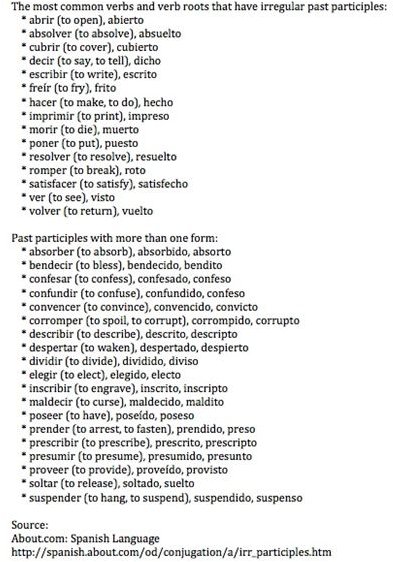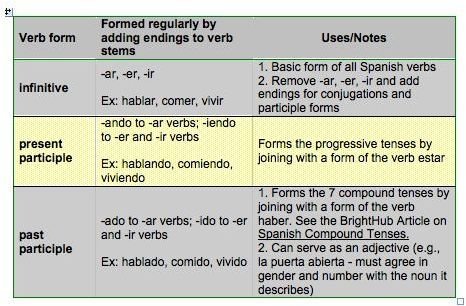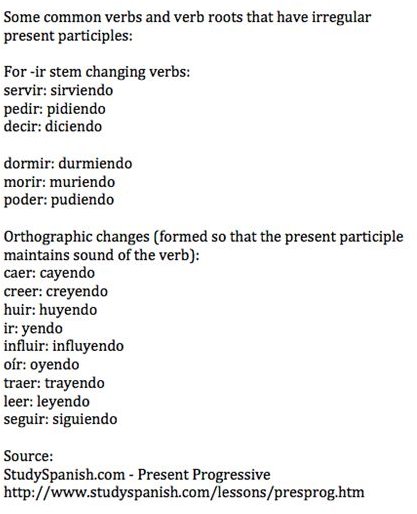Verb Use in Spanish: The Infinitive, The Present Participle, and the Past Participle
Getting Acquainted With Spanish Verbs
The principal form of every Spanish verb is its infinitive. The infinitive is the basic idea of the verb. For example, hablar (to speak) connotes just the idea of action. It has no person or time, which is provided by conjugating the verb. All regular Spanish verb infinitives come with one of three spelling variations. They either end in -ar, -er, or -ir (e.g., hablar, beber, vivir).
Infinitive Minus Ending = Verb Stem
Chop off the two letter ending of any regular Spanish verb to find the all important verb stem (habl-, beb-, and viv-). The verb stem and what is added to it determines the verb’s tense and person (e.g.: hablamos = we speak). What makes Spanish verbs so challenging is that we must learn 14 individual verb conjugations, but they do follow a pattern and can be learned through memorization and practice.
The Rest of the Spanish Verb Family
Present Participle
Another form of the Spanish verb is the present participle. In English we say, “I am speaking.” We use the present participle “speaking” to form our “progressive” tenses, which indicate ongoing actions. We add a form of the verb “to be” to add a sense of time in progress. (“I was speaking; I had been speaking,” etc. )
Spanish works much the same way. In Spanish we say, “Estoy hablando.” Spanish uses the present participle hablando and couples it with a form of the verb estar. As in English, the form of the verb estar adds a sense of time in progress. (Estaba hablando. I was speaking; Había estado hablando. I had been speaking, etc.)
The verb stem habl- is coupled with the -ando ending. Spanish has three classes of infinitive endings (-ar, -er, -ir), but only two present participle endings (-ando for -ar, and -iendo for -er, and -ir verbs). Unfortunately, there are a group of irregular present participle forms of Spanish verbs. See the section below for a partial list.
Past Participle
The past participle is another handy and vital Spanish verb form. In English we say, “I have spoken.” We use the past participle “spoken” to form the compound perfect tense. We add a form of the verb “to have” to add tense. (“I had spoken; I will have spoken,” etc.) The Spanish past participle, as in English, joins up with a form of the verb haber (to have) to form the seven compound tenses. (For example, H****e hablado. I have spoken.)
Like the present participle, the past participle has only two endings to add to the verb stem. Spanish -ar verbs get the -ado ending; -er, and -ir verbs get the -ido ending. Unfortunately, again, there are a group of irregular past participle forms of Spanish verbs. See the section below for a list of the most common Spanish verbs that have irregular past participles.
Examples of Irregular Present and Past Participles

A Recap of Spanish Verb Forms
Click on the image below for a matrix of Spanish verb properties. Here is the Bright Hub article on compound verbs referred to in the matrix.

Read more about Spanish verbs at:
About.com:Spanish Language - Using Infinitives as Nouns
About.com: Spanish Language - Present Participles in Spanish
